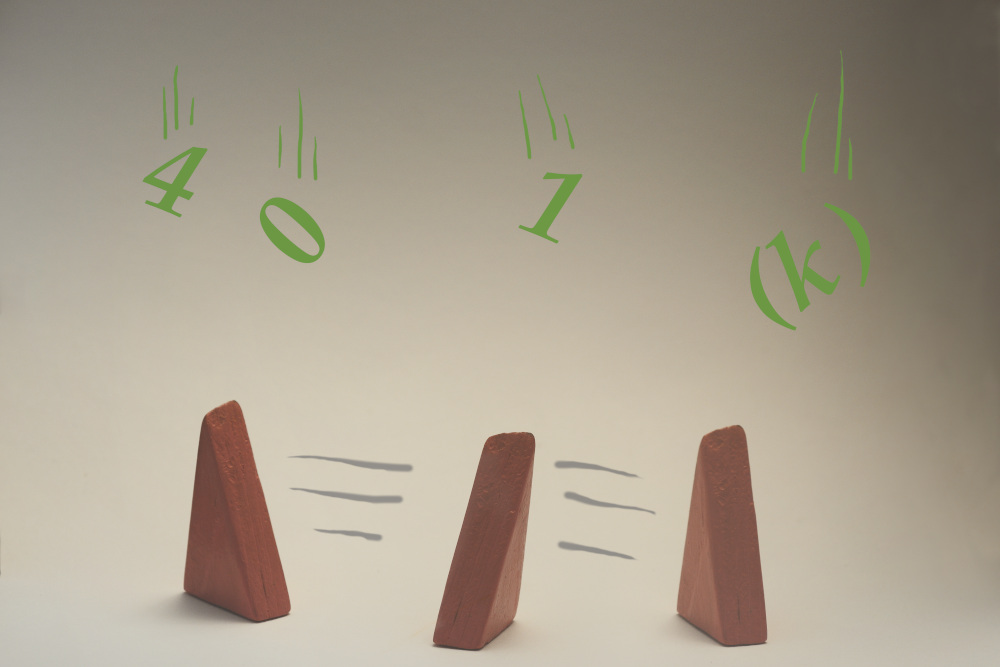
Earlier this year, a client rolled over an old 401(k) into her IRAs at TD Ameritrade (where we manage our clients’ investments). She received, correctly, two checks from her 401(k): one for her pre-tax 401(k) account and one for her Roth 401(k) account. She mailed both of those checks to TD Ameritrade…and they were both automatically dumped into her traditional IRA.
Not good.
The after-tax/Roth money should have been put into her Roth IRA. If it lives in her traditional IRA, then she loses much of the tax goodness of that after-tax money.
Thankfully, we caught the mistake quickly and were able to get the rollover money properly “situated.” I then posted about it on social media, and a second client reached out saying that uh, she fears she might have just done that, too (rolling old 401(k) into current 401(k)).
It made me realize that there are probably 1000 little (or not-so-little) ways that rolling over your 401(k) can go wrong. So, as the latest contribution to my informal, unnamed blog series of “all the bullshit you have to figure out in order to manage your finances well in this country,” I decided to write up a bunch of ways that rollovers can go wrong.
I previously wrote an article about the basics of rolling a 401(k) to an IRA or to another 401(k). For today’s article, I crowdsourced batshit/annoying/painful 401(k) rollover mistakes from colleagues. (If you enjoy displays of exasperation and angry resignation, just ask financial planners about how things can go wrong in this country’s financial infrastructure.)
I hope this list helps you avoid or fix mistakes when you roll over an old 401(k).
[Sidebar: This is one of those times when I realize that half the value (not an exact measurement) of being a financial planner is simply that “we’ve seen a lot” and therefore know more of the stupid minutiae necessary to navigate the world of personal finance.]
Don’t Roll After-Tax or Roth Money into a Pre-Tax Account
This is the gotcha I mentioned above. Ideally, the custodian (the financial company that hosts your 401(k)) would do it properly to begin with, but clearly that doesn’t always happen!
You have to pay attention to this process from beginning to end. Sorry.
- Confirm if you have both pre-tax and after-tax/Roth money in your old 401(k).
You should be able to see this on the 401(k) website. I know some websites are just Such Utter Sh*t that you can’t, in which case, look at statements or call the 1-800 number. - If you do have both kinds of money, confirm with your old 401(k) custodian that you will get two checks, one from each account.
If you’re lucky, the money will be moved electronically, but I checks are, somehow (!!), still the norm. - Once those checks are sent to the new 401(k) custodian, keep track of them being deposited into the new 401(k).
Pre-tax money into the pre-tax account. After-tax money into the Roth account. - If you do not see the right amount of money going into the right account, call/chat/carrier pigeon your new 401(k) custodian and get it fixed ASAP!
Consider Rolling After-Tax/Roth Money into an IRA (Even If Pre-Tax Money Goes into Your New 401(k))
If you are rolling your old 401(k) into your new 401(k), and you have after-tax/Roth money, but your new 401(k) doesn’t have a Roth option (highly unlikely in tech, but possible), then you can always roll your pre-tax money into the 401(k) and the Roth money into a Roth IRA. Yes, you can split them up like this!
Even if you can roll your Roth money into your new 401(k), you might not want to. Roth IRAs have some nice features that Roth 401(k)s do not, notably, you can more easily withdraw money from a Roth IRA without incurring taxes or penalties.
Don’t Ignore Communications from Your Old Employer/401(k) Plan
Financial advisor Daniel Yerger tells this story:
A medical clinic shut down its 401(k) plan in 2019. Notifications were sent out to all current and ex-employees with assets in the plan, saying that they had a 90-day period to roll over their assets; no one could stay in because the plan was being closed.
The clinic started a new 401(k) plan in 2022. The old plan’s TPA [Third Party Administrator, the company that manages day-to-day aspects of the 401(k) plan] contacted the clinic to say that they couldn’t do that because the old plan, though no longer reporting or active, still had four participants with balances.
Because the old 401(k) plan hadn’t been compliant for over one plan year, those assets were now non-qualified [i.e., they no longer had the tax protections of the 401(k)], and therefore subject to tax and penalties. All four people were ex-employees who ignored their notifications.
One employee therefore ended up with a $40,000 taxable check mailed to them a few years after the old 401(k) was shut down.
Moral of the story? Don’t ignore communications about old accounts.
Daniel’s story isn’t the only bad thing that could happen to you if you do. Investment choices can change. Expenses can change. Custodians can change. You want to know what’s happening.
If You’ve Moved Recently, Don’t Forget to Update Your Mailing Address
[Added 7/18/2024] Every time I share this blog post on social media, I get another horror story or warning, usually from a fellow advisor, based on their experience with clients. A colleague on Twitter (yes, Twitter, dammit!) warned, “for those on the move, make sure the sending recordkeeper has your correct mailing address before you request a direct rollover check.”
The last thing you want (okay, there probably things you want less, but it’d still be a giant PITA) is to request the rollover check and have it sent to an old address.I’ve never experienced this with my clients, but I can easily extrapolate just how unbelievably difficult this might be to undo.
Don’t Forget to Set Up Your Beneficiaries Again in the New Account
I hope you have your beneficiaries (i.e., who gets this money if you die?) designated on all your 401(k)s and IRAs (and life insurance policies, too, while I’m at it). It’s not important until It Really Is And Now It’s Too Late. Which is to say, it’s very important.
If you have a 401(k) without beneficiaries set properly, the wrong people might get your money if you die.
If you have beneficiaries designated in your old 401(k) and you roll that money into a new account, those beneficiary designations do not transfer with the money. So, make sure that that new account has beneficiaries set up the way you want.
(ht @ financial advisor Brian Gawthrop for this contribution)
Don’t Do an Indirect Rollover
When you roll over a 401(k), it can happen one of two ways:
- A direct rollover: the money from the 401(k) never touches any taxable account you own—like a checking account or taxable investment account—and goes directly from your old 401(k) into your new 401(k) or an IRA. The check is made out to something like “Fidelity fbo [for benefit of] Meg Bartelt”
- An indirect rollover: the money does touch such a taxable account. The check is made out to “Meg Bartelt.”
To calm your anxieties (“OMG, am I going to accidentally do an indirect rollover?”), let me just say that, in my experience, indirect rollovers are far less common. I’ve in fact never seen this with our clients in the tech industry.
Here’s how an indirect rollover works:
- Let’s say your old 401(k) is $100,000.
- You do an indirect rollover, and the 401(k) money is distributed directly to you.
- Your old employer automatically withholds 20% of the balance to pay income taxes, $20,000.
- You receive a check for $80,000 and put it in your IRA.
- If you don’t do anything else, you now owe income taxes and a penalty on that $20,000, because it has been deemed a withdrawal/distribution from your 401(k)…and you have $20,000 less in your retirement account than you used to.
- To avoid this, you have to come up with $20,000 cash from…somewhere to also put into your IRA (for a total of the original amount of $100,000), and then you’ll get the $20,000 withholding back at tax time.
Many people don’t just have an extra $20,000 cash (or whatever amount) hanging around. And many other people don’t realize they’ll get taxed and penalized if they don’t deposit it in their IRA.
Brian Gawthrop’s advice? “If the check is made out to you, send it back and don’t deposit it in your checking account.”
(ht @Andy Lindeman for this contribution)
Don’t Roll Your 401(k) Over Too Quickly
If you roll over your old 401(k) in the first few weeks after leaving your job, it’s possible that you’ll have to request a second 401(k) rollover shortly thereafter. Why? Two possible causes:
- Because if you don’t wait for your final paycheck—and the 401(k) contribution that comes out of it—to fully process before doing a 401(k) rollover, then you’ll have a bit more money contributed to your 401(k) after you’ve rolled most of the money out. (ht @ financial advisor Luis Guardia for this contribution. Advisor Jeff Bograd assures me that “A lot of plans are set up so you can’t request a distribution for a specific period of time following termination of employment specifically to avoid residual balances.” So, this gotcha probably isn’t very common.)
- Your company does a 401(k) match “true up” after the end of the fiscal year. If you leave your job early in the year and roll your money out of your 401(k) before the true-up money “lands” in it, you will receive the true up into the now-empty 401(k) account. (ht @ Andy Lindemann; I’m crowd-sourcing this mofo!)
Not the end of the world. Just a pain.
Don’t Leave It Too Long
I usually describe rolling over an old 401(k) as “important, but not urgent” because, in the tech industry, almost all 401(k)s have low costs and broadly diversified investment options. Especially in a world where there usually are urgent financial tasks to take care of, I think it’s important to distinguish urgent from not.
But if you leave it for years, the mental hurdle to Just Doing It (eventually) is going to get higher and higher. At least, that’s what I’ve seen with our clients. [Added 7/18/2024] We had one client (God bless ‘im) who waited so long to roll his old 401(k) account over, and the only evidence he had of it was a decade-old (never deposited) rollover check, that we had to play sleuth just to figure out where the money now lived. (Answer? The state’s unclaimed property division.) The jury is still out about how he’ll actually get the money back.
So, while, again, it’s not necessary to roll your 401(k) over soon after leaving your last job, if you have a good place to roll it to, you’re probably better off just getting it done done DONE now instead of having to summon the motivation in the future.
I’m sure there are other gotchas. The financial-services industry seems custom made to trip up even the most diligent of us. But this is a really strong start to the list.
Bonne chance!
Do you not want to have to know this stupid stuff yourself? Reach out and schedule a free consultation or send us an email.
Sign up for Flow’s twice-monthly blog email to stay on top of our blog posts and videos.
Disclaimer: This article is provided for educational, general information, and illustration purposes only. Nothing contained in the material constitutes tax advice, a recommendation for purchase or sale of any security, or investment advisory services. We encourage you to consult a financial planner, accountant, and/or legal counsel for advice specific to your situation. Reproduction of this material is prohibited without written permission from Flow Financial Planning, LLC, and all rights are reserved. Read the full Disclaimer.



